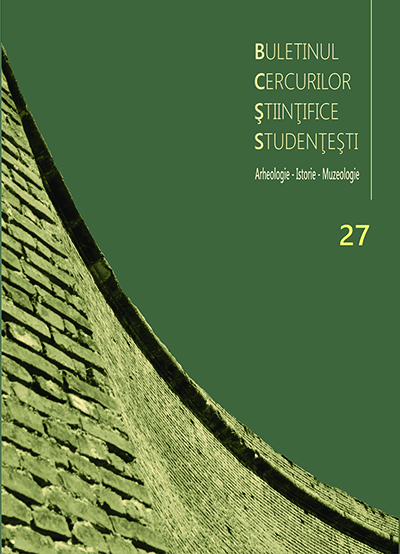Arhivele statului în șantier continuu. Cazul Ansamblului monastic Mihai-Vodă din București (sec. XIX-XX)
STATE ARCHIVES CONTINUOUSLY UNDER CONSTRUCTION. THE CASE OF THE MIHAI-VODĂ MONASTIC ENSEMBLE (19TH-20TH CENTURIES)
Author(s): Maria Alexandra SasSubject(s): Cultural history, Architecture, Modern Age
Published by: Universitatea »1 Decembrie 1918« Alba Iulia
Keywords: Mihai-Voda Monastery; architects; Bucharest; National Archive;
Summary/Abstract: The case of the General Headquarters of the Archives of the Mihai-Vodă Monastery in Bucharest represents a unique situation in the history of archives and architecture in Romania. This paper presents the course of the rehabilitation, restoration and reconstruction works that took place within the ensemble and that extended over a period of 119 years, between the 19th and 20th centuries, bringing to light information and events from several unpublished unique sources - from the archives. Thus, it illustrates the frequent construction sites that defined the existence of the archives in the monastic ensemble. The continuous state of the site is the result, on the one hand, of the precarious state of the ensemble when it was assigned to the archives and their relocation, and on the other hand, of the limited funds that were allocated and which restricted the possibilities of carrying out complex works at the level of the entire ensemble. Therefore, two categories of building sites can be distinguished in the existence of the ensemble, firstly those of the 19th century, when only emergency and strictly necessary works were carried out, with an attempt being made at the end to create a new project specifically for the archives, an intention which was due to the precarious state of the buildings, but which was not carried out. Secondly, the 20th century capital construction sites, so in the first part of the century, the buildings were rebuilt in stages, and in the second half of the century they were demolished to make way for the project to systematize the entire Uranus district, in order to make way for the People's House and the Izvor Park. One of the main objectives of the present work was to identify the architects who carried out the projects or supervised the building sites, as their number was large. Thus, nine architects were identified who were actively involved in the design and supervised the projects, three who participated in the reception of the works and one architect who proposed a project, which was not carried out.
Journal: Buletinul Cercurilor Științifice Studențești
- Issue Year: 27/2021
- Issue No: 1
- Page Range: 67-104
- Page Count: 38
- Language: Romanian

